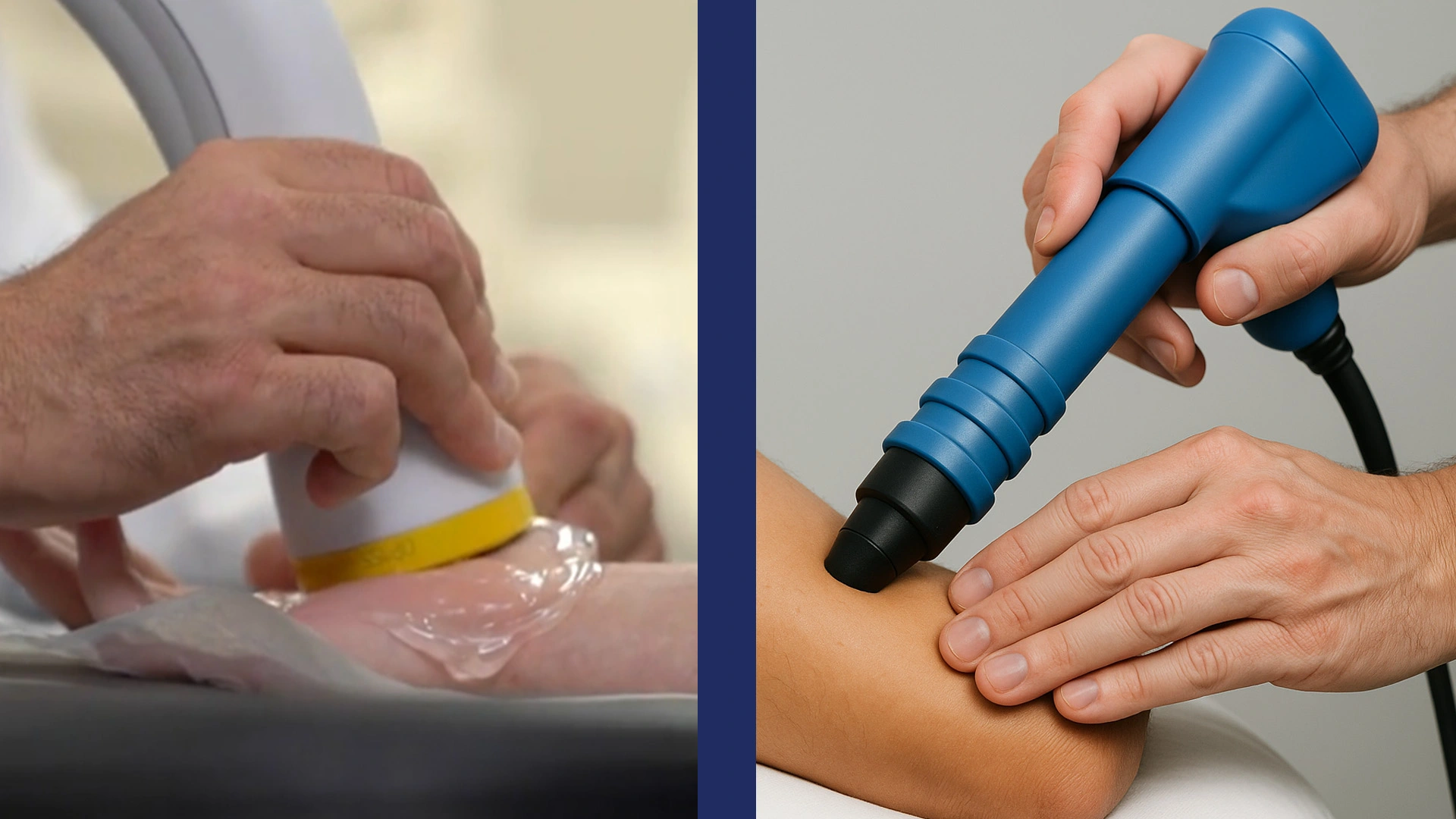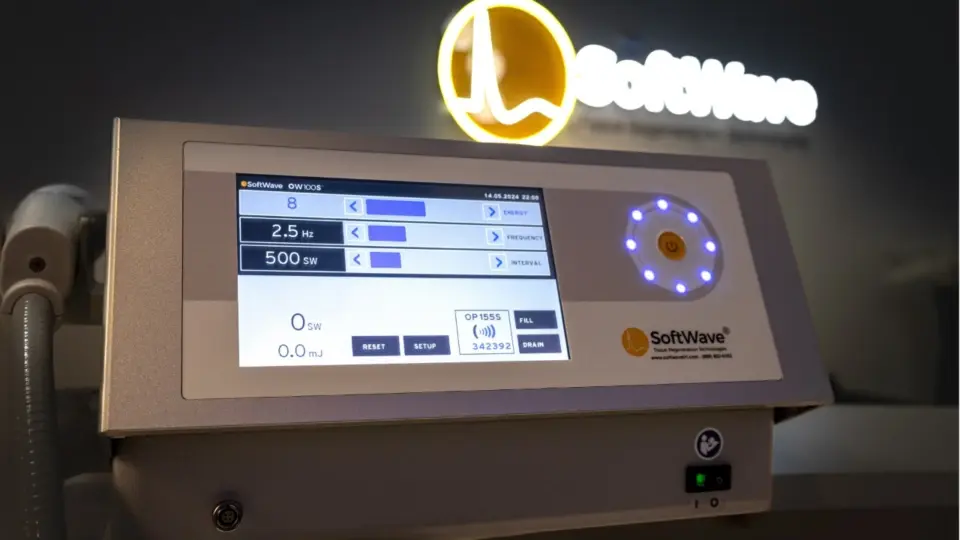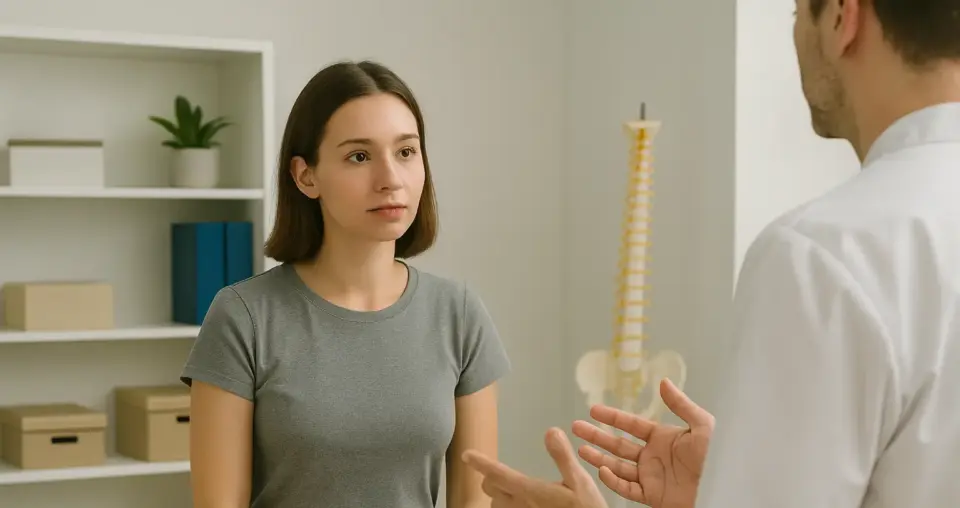If you’re exploring non-invasive treatment options for pain or injury recovery, you may have come across both SoftWave and shockwave therapy. At first glance, they sound like the same thing—but there are important differences that can impact your comfort, results, and overall healing journey.
In this guide, we’ll break down the distinctions between traditional shockwave and SoftWave Therapy, so you can make an informed decision about which treatment is right for you.
What Is Traditional Shockwave Therapy?
Traditional shockwave therapy typically refers to focused or radial extracorporeal shockwave therapy (FSWT or RSWT). It uses high-intensity, mechanical sound waves to deliver pinpoint energy to injured or inflamed tissue. Originally used in urology to break up kidney stones, focused shockwave has since been adapted for musculoskeletal conditions.
- Focused shockwaves deliver energy to a small, targeted area
- Radial shockwaves disperse energy over a slightly broader, more superficial range
- Some patients report discomfort during sessions, and numbing agents may be needed in more intense applications
While effective for certain conditions, traditional shockwave is not always well tolerated and does not typically activate broader regenerative responses in the body.
What Is SoftWave Therapy?
SoftWave is a next-generation, unfocused shockwave technology that uses low-intensity, electrohydraulically produced acoustic waves. Instead of targeting a single small spot, SoftWave disperses energy more broadly, allowing it to treat larger areas of tissue at once—without the discomfort often associated with focused shockwave.
SoftWave Therapy is FDA-cleared for musculoskeletal disorders and offers a range of regenerative benefits:
- Increases circulation and cellular communication
- Activates resident stem cells within 45 minutes of treatment
- Breaks up scar tissue and oxidative stress around damaged cells
- Decreases inflammation and promotes long-term healing
Key Differences Between SoftWave and Traditional Shockwave
| Feature | SoftWave Therapy | Traditional Shockwave |
|---|---|---|
| Type of Wave | Unfocused acoustic waves | Focused or radial shockwaves |
| Energy Delivery | Broad, deep tissue penetration | Targeted, high-intensity point |
| Comfort | Generally well tolerated | Can be painful; may require numbing |
| Area Treated per Pulse | Large, multi-tissue coverage | Small, localized area |
| FDA Clearance | Yes, for musculoskeletal conditions | Varies; not all devices are cleared |
| Stem Cell Activation | Clinically supported | Limited or not primary mechanism |
Why Patients Choose SoftWave Over Traditional Shockwave
More and more patients are choosing SoftWave because it:
- Treats a broader area in less time, ideal for complex or hard-to-pinpoint pain
- Is significantly more comfortable during the session
- Supports true regenerative healing, not just temporary pain relief
- Requires no downtime, with most patients resuming normal activity immediately
Whether you’re dealing with plantar fasciitis, shoulder tendonitis, or neuropathy, SoftWave Therapy can target both the symptom and the underlying tissue dysfunction with a gentle, non-invasive approach.
Are There Situations Where Shockwave Might Be Used Instead?
Yes—in certain cases, traditional shockwave therapy may still be used, particularly in:
- Urology (e.g., kidney stones)
- High-performance sports medicine protocols
- Facilities that do not yet have access to SoftWave technology
However, for most musculoskeletal conditions, patients prefer SoftWave for its comfort, safety, and regenerative capabilities.
Where to Experience SoftWave Therapy in the North Suburbs
At Health Clarified in Northbrook, we specialize in delivering SoftWave Therapy with expert care and personalized treatment plans. We’re proud to serve patients throughout the North Suburbs of Chicago who are seeking a better alternative to injections, surgery, or painful therapies.
Want to see how it works? Try SoftWave for yourself with our $79 introductory session, which includes your first treatment and personalized consultation.




